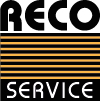Heat-seal coating is the full-surface coating of a mostly thin and flexible carrier material with a thermally activated adhesive that is also pressure-sensitive. The advantage of the heat-seal coating compared to a self-adhesive coating is that the heat-seal coating is NOT sticky without the influence of temperature and pressure at the same time, i.e. the coating can be stored and traded openly and WITHOUT cover paper (silicone paper). With machine processing, this means that on the one hand no glue has to be added and of course no glue matrices etc. are required. On the other hand, the material can be conveyed/positioned with mechanical gripping elements without them being contaminated with adhesive.
Processing of materials with heat seal coating
In order to connect a heat-sealable coated material to an adhesive substrate, the adhesive coating must be brought into its aggregate state by applying an activation temperature between 100°C and 120°C and at the same time a surface pressure of 3 bar (corresponds to 30 N/cm² or 3 kg/cm² ) for a period of 3-5 seconds. It is NOT possible to activate a heat seal coating with an iron because the surface pressure will not be sufficient for this (the iron would have to be pressed on with about 500 kg). If the surface pressure of 3 bar cannot be applied for technical reasons, we recommend using a material with a hot-melt adhesive coating.
Great benefits of the RECO Service.
Benefit from over 30 years of experience with bookbinding materials for hardcover books.




